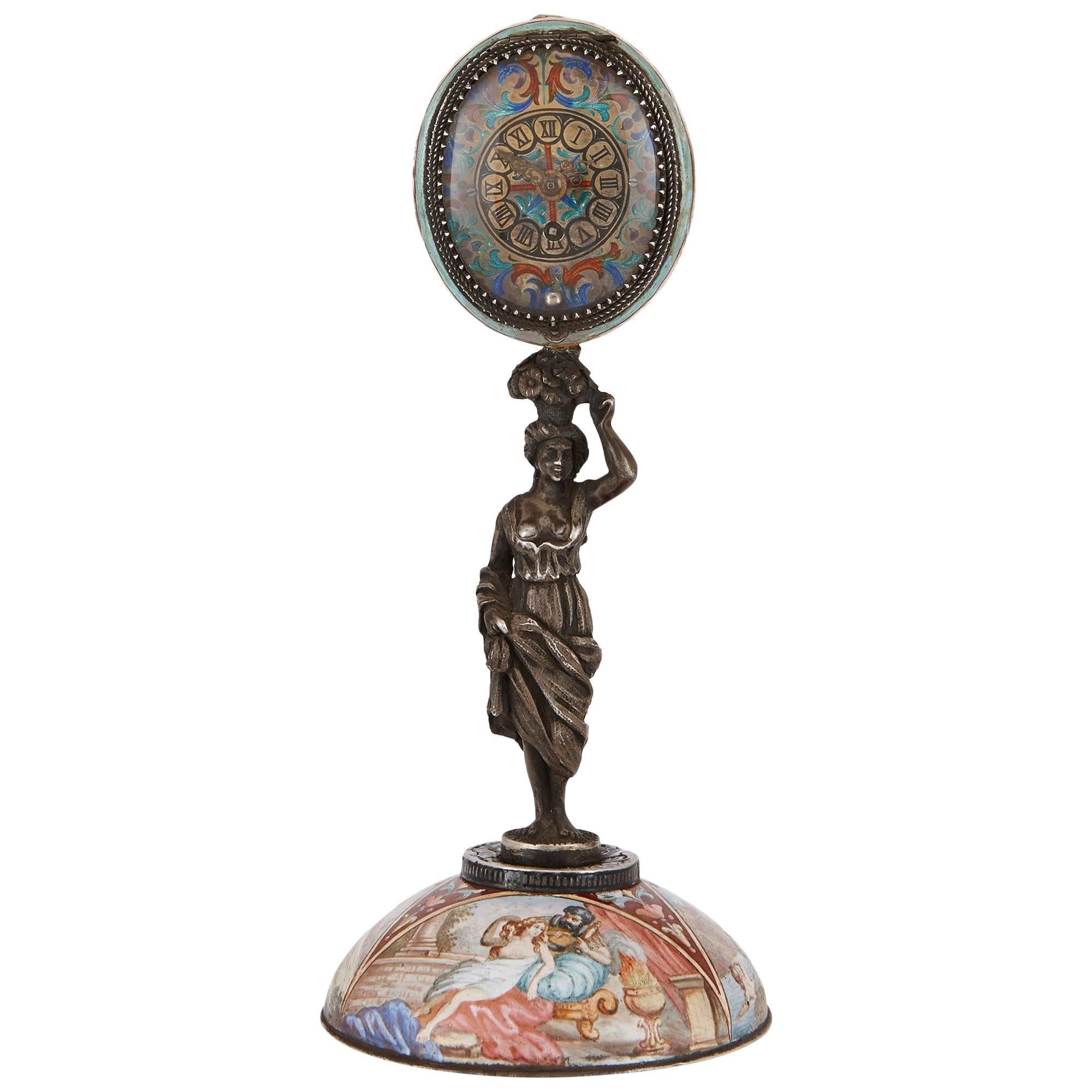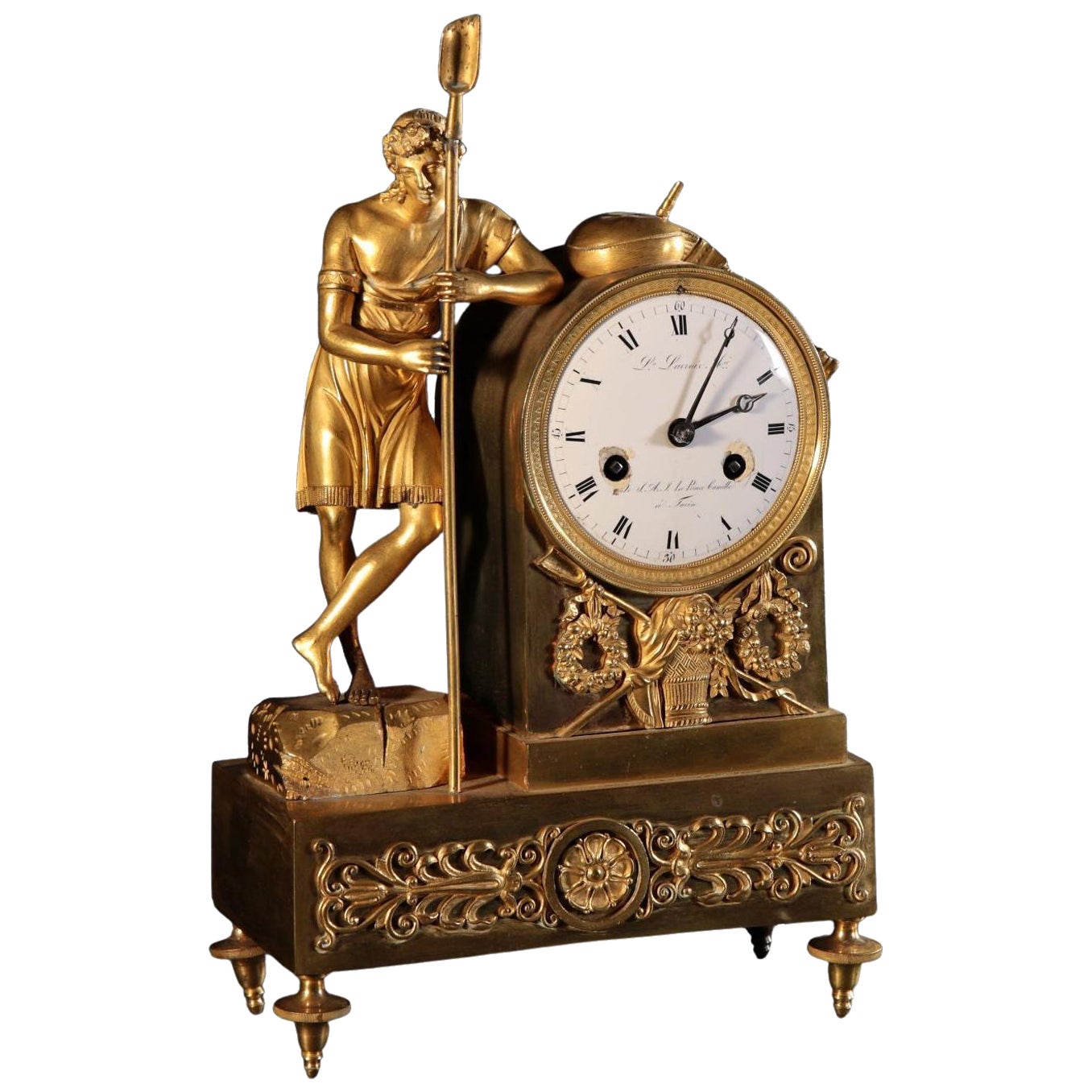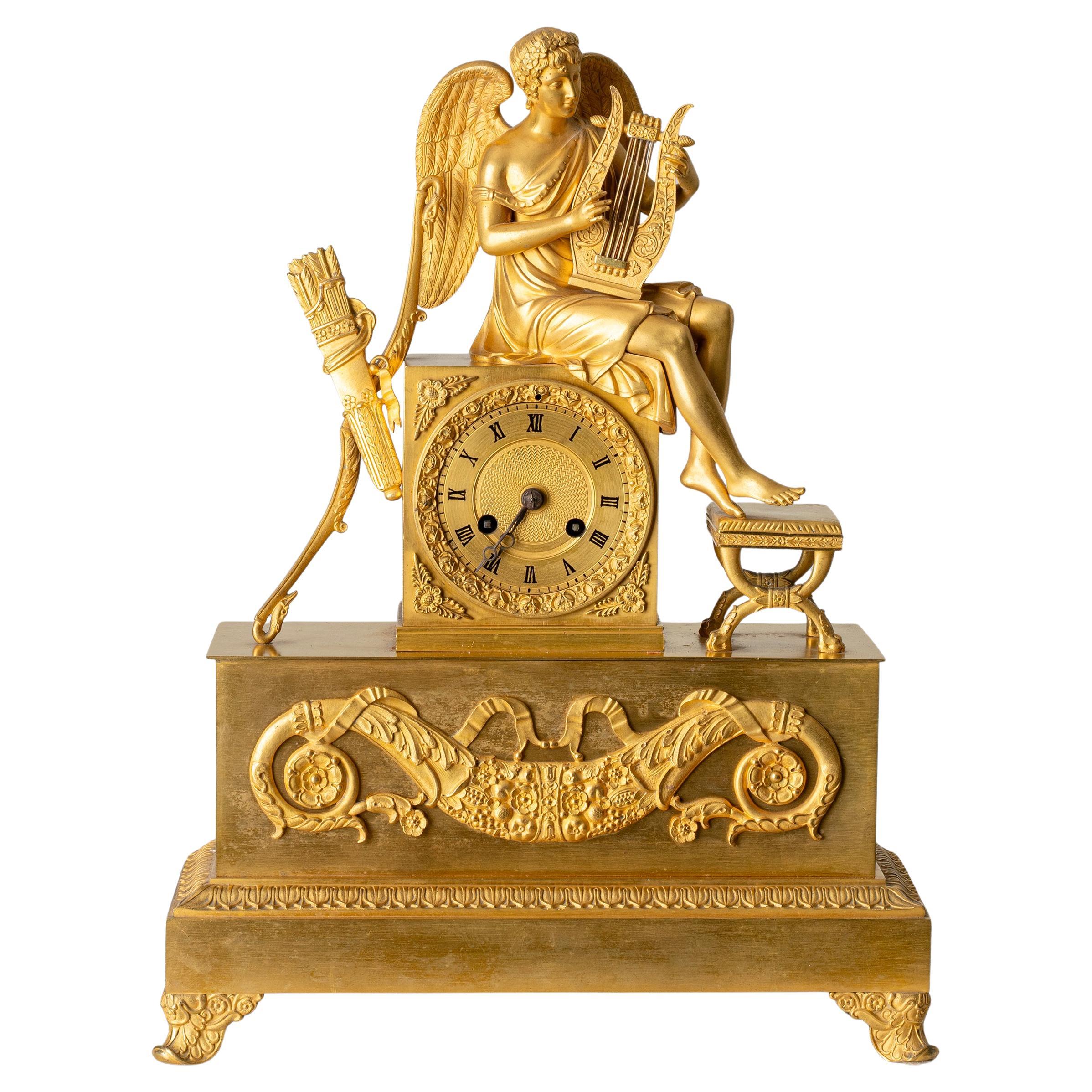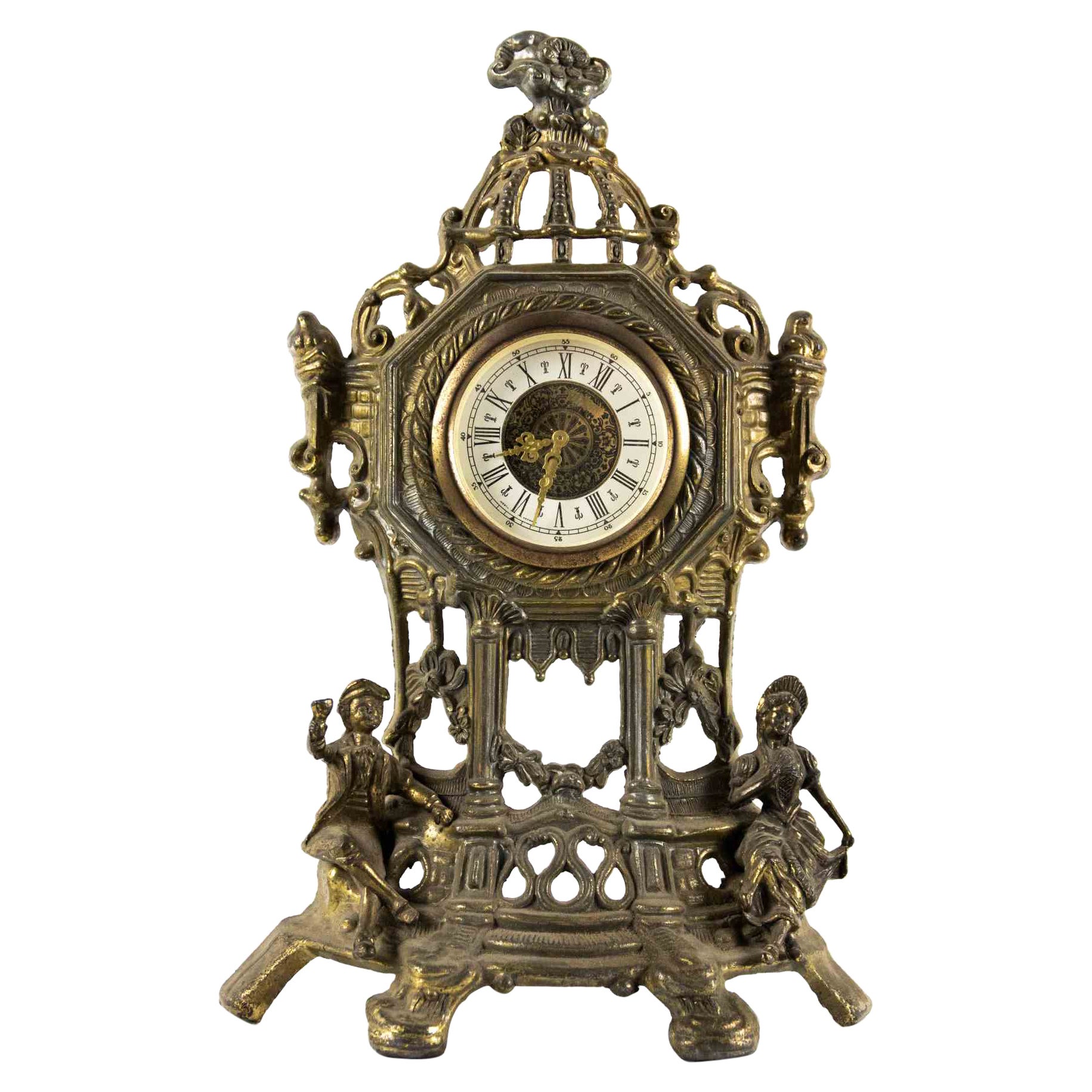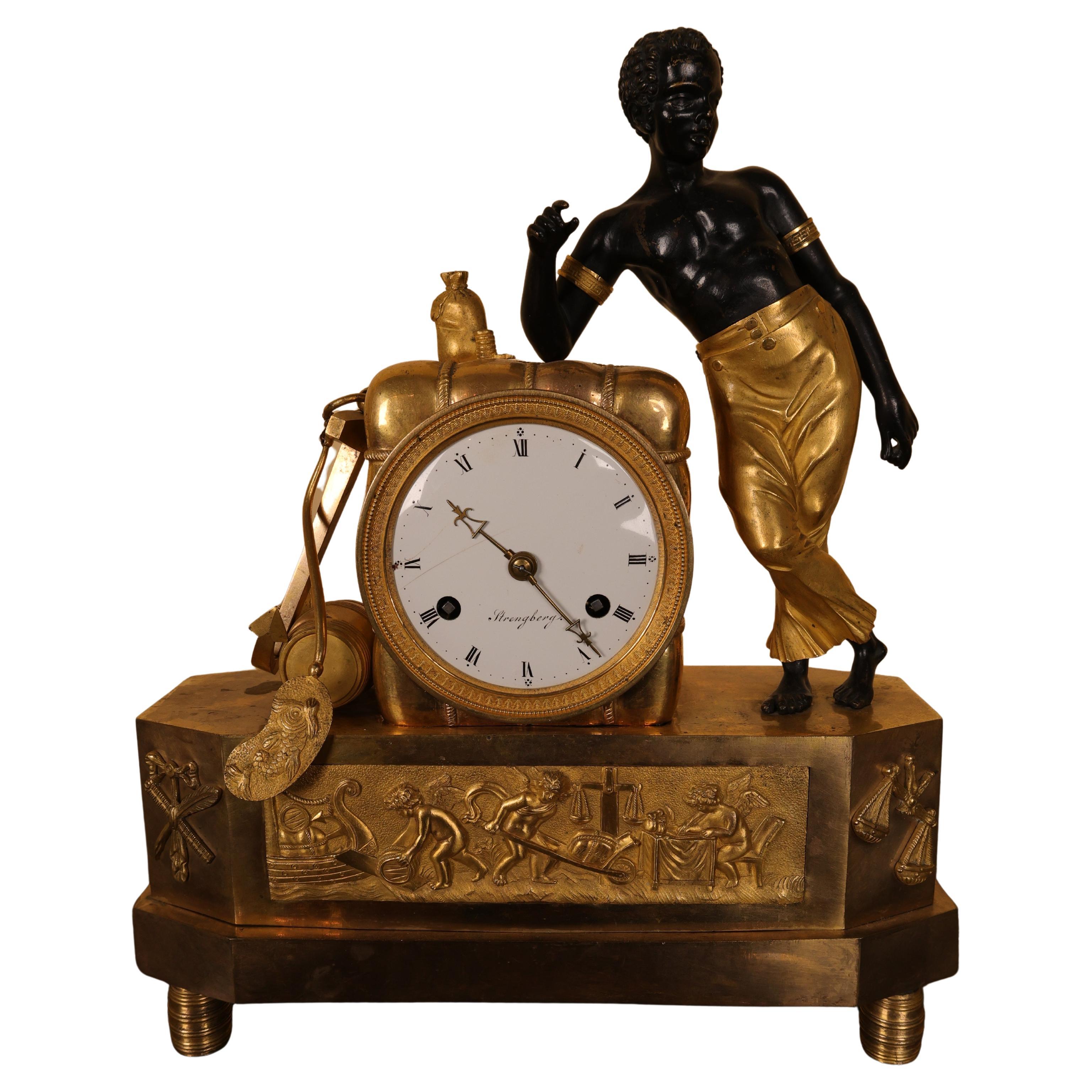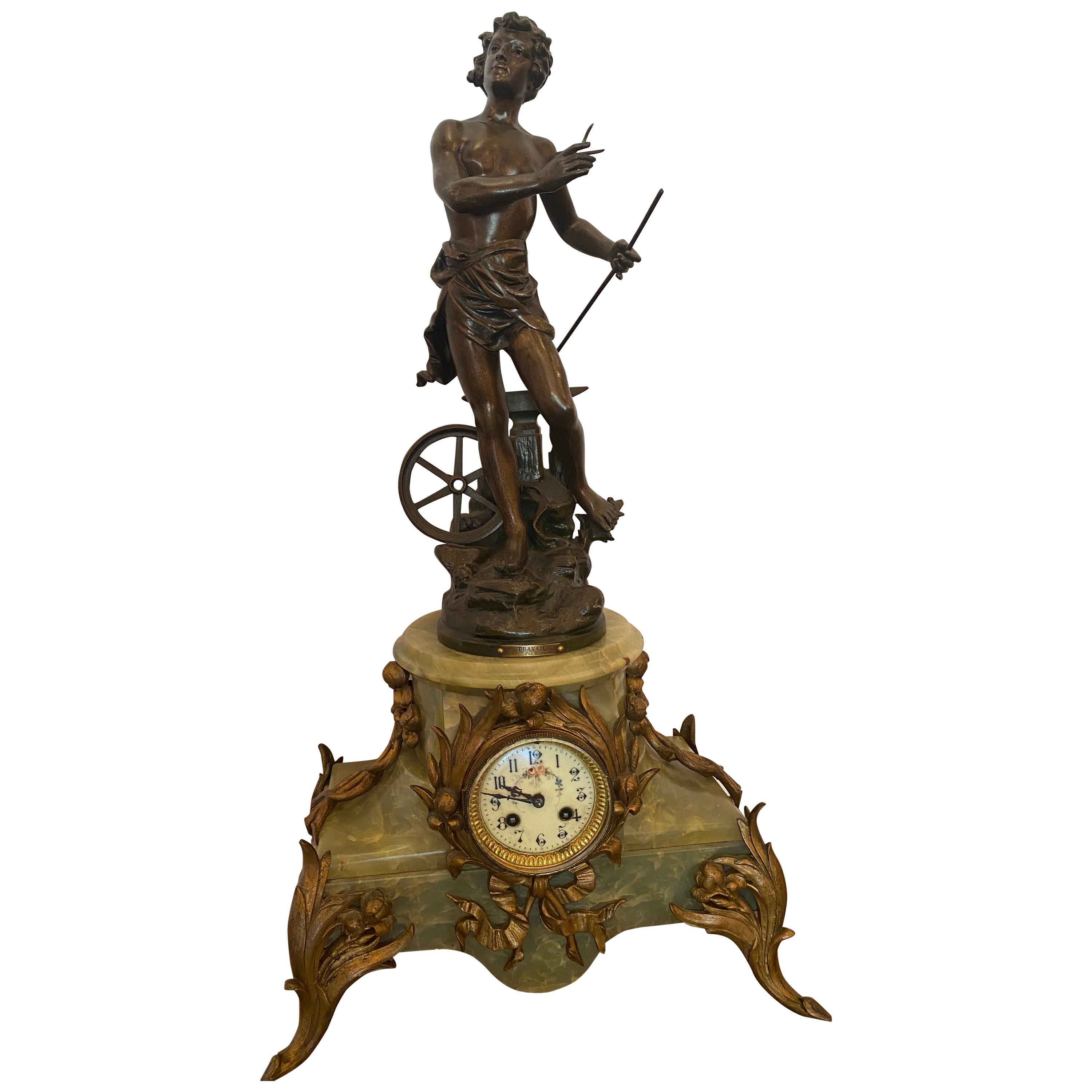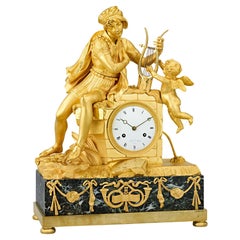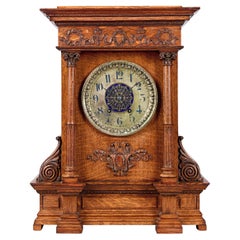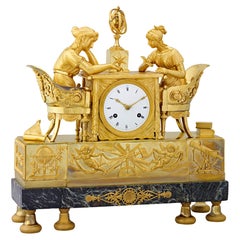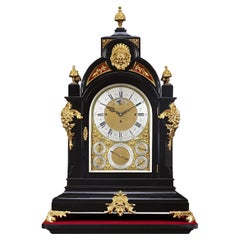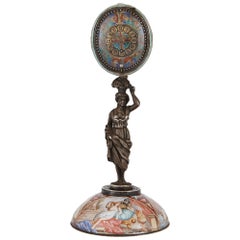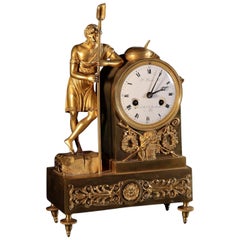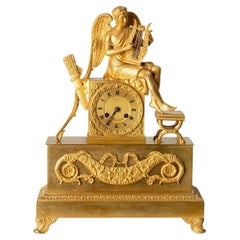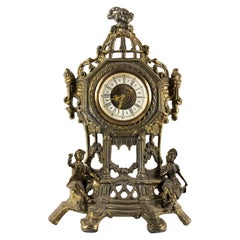Items Similar to Buschman “Minerva” German Horizontal Table Clock
Want more images or videos?
Request additional images or videos from the seller
1 of 5
Buschman “Minerva” German Horizontal Table Clock
$34,500
£25,766.08
€29,897.71
CA$47,782.74
A$53,564.07
CHF 27,932.45
MX$656,564.78
NOK 353,951.05
SEK 336,512.40
DKK 223,075.60
Shipping
Retrieving quote...The 1stDibs Promise:
Authenticity Guarantee,
Money-Back Guarantee,
24-Hour Cancellation
About the Item
The extraordinary beauty and superior craftsmanship of 17th century German clockmaking is on full display in this exceptionally rare horizontal tabletop timepiece dating to 1650 Augsburg. Created by Johannes Buschman the Younger, the eminent Buschman family of clockmakers are lauded for designing some of the finest timepieces to ever be created in the South German town of Augsburg during the late Renaissance and early Modern periods. A finely moulded ebony and turtleshell casing veneered in a mottled red hue holds the clock’s fusée and chain movement with verge escapement and balance with hogs-bristle regulation. A silver figure of Minerva, Roman goddess of war and wisdom, centers the Roman numeral-engraved chapter ring, indicating the time by pointing to the hour with an authoritative military staff as the sun rotates below her feet to indicate the minute. The incredible design is finished by a gilded backplate intricately pierced and engraved with a floral motif and the signature of Johannes Buschman.
Clocks are one of the greatest and most important inventions of the Renaissance period, improving steadily into the Age of Discovery. Embodying a renewed interest in science, the arts and humanism, the first mechanical timepieces began appearing in the 14th century and were large, weight-driven devices placed in the turrets of public buildings that struck the hour and lacked hands and faces. This clock was created during the first period of household clocks, when spring-driven movements made it possible to create smaller and more complex mechanisms. Such creations, however, were a luxury accessible only to the wealthy upper classes. Affluent patrons placed pressure upon artisans to create more elaborate and ornate clocks, of which this particular timepiece can be counted.
German table clocks dating to the mid-17th century similar to this spectacular piece can be found in the collections of London's British Museum, as well as the Metropolitan Museum of Art and The Frick Collection in New York. Buschman timepieces are hotly desired by collectors and connoisseurs alike and are highly sought-after at Sotheby's and Christie's auctions,
circa 1650, Augsburg, Germany
Gilded backplate engraved with signature, “Johannes Buschman, Aug:”
Measures: 5 5/8" wide x 5 5/8" deep x 5" high.
- Dimensions:Height: 5 in (12.7 cm)Width: 5.63 in (14.31 cm)Depth: 5.63 in (14.31 cm)
- Style:Renaissance (Of the Period)
- Materials and Techniques:
- Place of Origin:
- Period:
- Date of Manufacture:circa 1650
- Condition:
- Seller Location:New Orleans, LA
- Reference Number:Seller: 30-97041stDibs: LU891117366482
About the Seller
5.0
Recognized Seller
These prestigious sellers are industry leaders and represent the highest echelon for item quality and design.
Established in 1912
1stDibs seller since 2010
108 sales on 1stDibs
Typical response time: 4 hours
- ShippingRetrieving quote...Shipping from: New Orleans, LA
- Return Policy
Authenticity Guarantee
In the unlikely event there’s an issue with an item’s authenticity, contact us within 1 year for a full refund. DetailsMoney-Back Guarantee
If your item is not as described, is damaged in transit, or does not arrive, contact us within 7 days for a full refund. Details24-Hour Cancellation
You have a 24-hour grace period in which to reconsider your purchase, with no questions asked.Vetted Professional Sellers
Our world-class sellers must adhere to strict standards for service and quality, maintaining the integrity of our listings.Price-Match Guarantee
If you find that a seller listed the same item for a lower price elsewhere, we’ll match it.Trusted Global Delivery
Our best-in-class carrier network provides specialized shipping options worldwide, including custom delivery.More From This Seller
View AllFrench Empire Troubadour Mantel Clock
By Le Roy
Located in New Orleans, LA
This resplendent French Empire gilt bronze mantel clock features an extraordinarily detailed scene of a singing troubadour with his lyre along a rocky river bank. Accompanied by a wi...
Category
Antique 19th Century French Empire Mantel Clocks
Materials
Marble, Bronze
Vincenti et Cie Mantel Clock for Bailey, Banks & Biddle
Located in New Orleans, LA
Wooden Mantel Clock
Vincenti et Cie
Late 19th century
The mechanism is marked "Vincenti et Cie, Médaille d'Argent 1855, Made in France." Vincenti et Cie, established in 1823 by Jean Vincenti in Montbéliard, was revitalized by Albert Roux in 1829, who expanded and innovated the company. Under Roux's leadership, the firm continued its Montbéliard operations and opened a store in Paris in 1850 on Rue d'Anjou in the Marais. The company earned a silver medal (Médaille d'Argent) at the 1855 Exposition Universelle, for which this clock bears the mark "Médaille d'Argent, 1855," symbolizing its excellent craftsmanship.
The clock dial is marked Bailey, Banks & Biddle for the oldest nationwide jeweler in America, originally founded in 1832 in Philadelphia, Pennsylvania. The company is one of America's most prestigious retailers, known for creating the updated and final version of the Great Seal of the United States as well as the first 40,000 Purple Heart medals...
Category
Antique 19th Century French Mantel Clocks
Materials
Oak
The Astronomy Lesson French Empire Mantel Clock
Located in New Orleans, LA
This magnificent French Empire ormolu mantel clock features the iconic Neoclassical genre scene often referred to as "The Astronomy Lesson." A popular motif during this period, Emper...
Category
Antique 19th Century French Empire Mantel Clocks
Materials
Marble, Enamel, Ormolu
Monumental Three-Train Bracket Clock by J.C. Jennens & Sons
Located in New Orleans, LA
This intricately detailed 19th-century bracket clock from famed English firm J.C. Jennens & Sons is monumental in size, likely made for one of the great world exhibitions or perhaps to put in the firm's own store window. The eight-day timepiece has a triple fusee...
Category
Antique 19th Century English Table Clocks and Desk Clocks
Materials
Bronze
Art Deco J.E. Caldwell Table Clock
By J.E. Caldwell & Co.
Located in New Orleans, LA
This luxurious and rare table clock is the essence of Art Deco style. Retailed at the renowned J. E. Caldwell & Co., this exceptional timepiece is comprised of a French clock movement...
Category
20th Century American Art Deco Table Clocks and Desk Clocks
Materials
Enamel
Raingo Orrery Clock
Located in New Orleans, LA
Orrery Clock
Zacharie Raingo
Circa 1817
This exceptional orrery clock represents one of the most historically significant and mechanically sophisticated timepieces to emerge from ea...
Category
Antique 19th Century French Table Clocks and Desk Clocks
Materials
Bronze, Enamel
$445,000
You May Also Like
Antique Silver and Enamel Viennese Table Clock
Located in London, GB
This 19th century, Austrian table clock is crafted in silver and the complex champleve enamel technique. The base of the clock is a semi-spherical dome inlaid with enamel panels of c...
Category
Antique Late 19th Century Austrian Neoclassical Table Clocks and Desk Cl...
Materials
Silver, Enamel
Mantel Clock, Camillo Borghese, First Quarter 19th Century
Located in Milano, IT
The gilt bronze mantel clock has a base decorated on the front with leafy phytomorphic motifs and a central floral element, and is supported by elaborate spinning top feet that streamline its shape. On the base rests a large plinth...
Category
Antique Early 19th Century Italian Other Mantel Clocks
Materials
Bronze
$2,790 Sale Price
60% Off
Table Clock Empire Period France
Located in New York, NY
A mantel clock made during the Empire period 1790-1820 in France. Made from burnished gilt bronze. The Greek God Apollo is playing the lyre with his feet resting on a guilded stool.
Category
Antique 1790s French Empire Table Clocks and Desk Clocks
Materials
Bronze
Vintage Table Clock, Early 20th Century
Located in Roma, IT
Vintage clock is an original object realized in the early 20th century.
Original brass and glass.
Made in Germany.
Beautiful original vintage clock created in Germany betwe...
Category
Early 20th Century German Table Clocks and Desk Clocks
Materials
Brass
19th Century Peter Strengberg Mantel Clock
Located in Ljungby, SE
A high-quality Swedish burnished gilt and patinated bronze mantel clock with a movement by Peter Strengberg (watchmaker in Stockholm and Mariefred from 1802-1831). The design is base...
Category
Antique Early 19th Century Swedish Mantel Clocks
Materials
Bronze
19th Century Travail Par Kossowsk Mantel Clock
Located in Dallas, TX
19th century onyx and bronze travail par kossowsk mantel clock with petite bronze figure of industry and painted porcelain face.
Category
Antique Early 19th Century French Mantel Clocks
Materials
Bronze
$2,240 Sale Price
20% Off
More Ways To Browse
Antique German Table
17th Century German
Horizontal Mid Century Art
Antique German Desk
Antique Minerva
Rotating Desk
Antique German Ring
Antique German Rings
Renaissance Small Table
Modern Desk Clocks
Ornate Clock
Antique Roman Desk
German Made Clocks
Balance Clocks
Mid Century German Clock
Ebony Antique Desk
Small Table Clock
Large Table Clock
